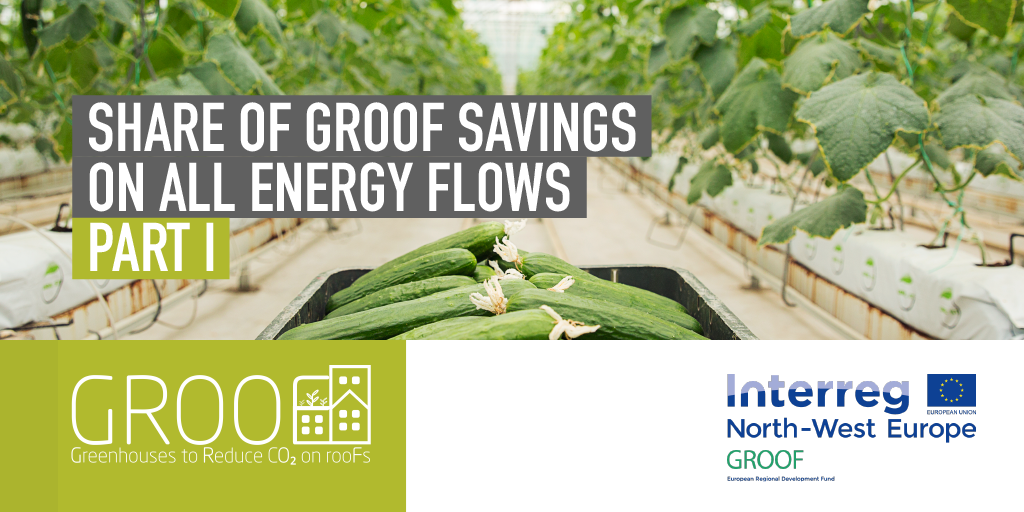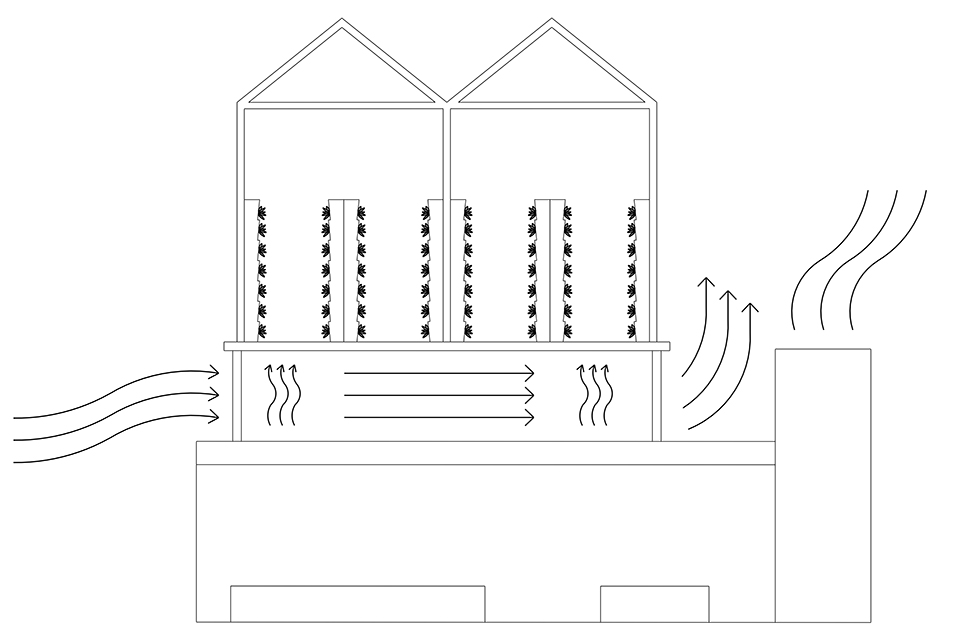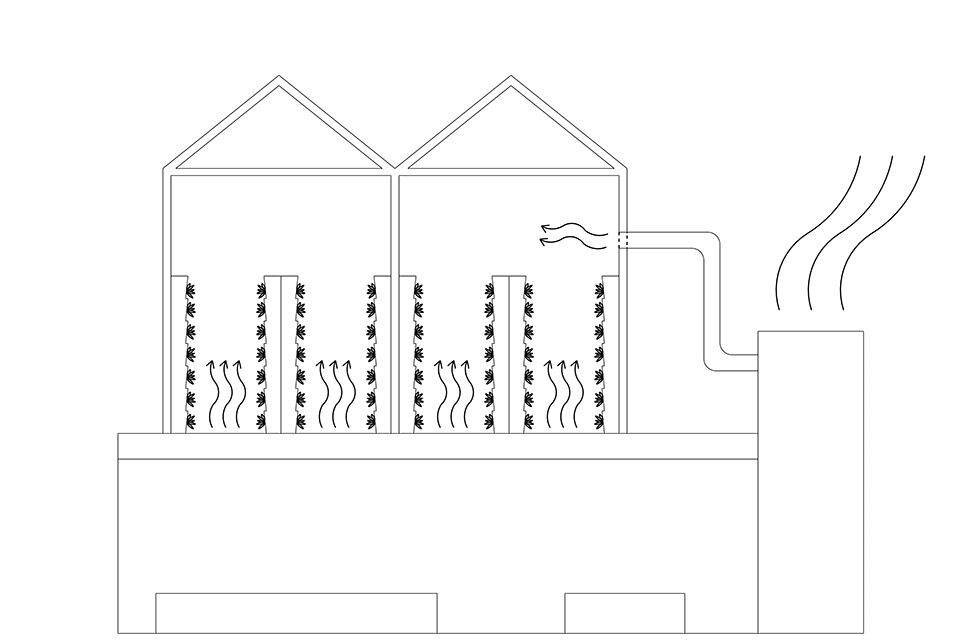Part I: Reducing the energy loss in the building
Installing a rooftop greenhouse not only gives us the opportunity to build a future proof and reliant urban farm, it also helps a lot with saving energy in multiple areas in the support building and the area around the greenhouse.
This is the first article in a series of three parts, concerning mainly the energy loss reduction in the support building due to the greenhouse installation. The next two parts will cover the circular economy of material flows and the greenhouse as an energy collector.
The urbanization has steadily increased in the last hundred years. While new space to live is being erected all the time, a lot of buildings in the urban areas in Europe are from the 60s and 70s. These buildings are seldom abiding any insulation standards of modern constructions and are deemed a main source of CO2 emissions in the building sector. Current estimations of the World Green Building Council show that buildings and construction are responsible for 39% of all worldwide carbon emissions (date: 23 September 2019).
Mitigating the impact buildings to the carbon emissions is therefore a key aspect in achieving the goal of zero net emissions in 2050 as it is portrayed in the ambitious goals of the EU.
One major aspect of the emissions is generated due to losses in the older insulations of the rooftops. The heated air in residential and office areas is rising in the buildings, the roof heats up and loses the energy over transmissive radiation or gets actively cooled by the wind which is stronger the higher the building rises. Depending on different sources, the losses over the roof vary between 25 and 35 % with older buildings losing even more [1,2]. To reduce these losses, often expensive measures are necessary, for example the proper update of the insulation of said roofs.
The GROOF project now examines the opportunities and possibilities of a rooftop greenhouse to reduce CO2 in an urban context. It portrays an interdisciplinary project to examine the synergies of the greenhouse food production and the support building.
One of these aspects is the greenhouse serving as a roof cover, helping not only to reduce the heat losses of the building but also to positively use the heat in a futureproof application. As it will be seen in the second part of this series, food production is an energy system in itself. Using energy which is normally lost to the environment can save money and will have a positive effect on the climate.
In such a case the greenhouse constitutes a second skin for the building and the transmissive losses of the rooftop can be reused in the greenhouse. Since the greenhouse is a mostly closed environment during the times of the year where the heat losses are at their largest, the heat will be trapped (Ventilation is reduced in a greenhouse in winter). Even a non-heated space with no internal air movement will, in general, be an additional insulation layer and therefore adding to the total insulation properties of the building. On the other hand, the rooftop greenhouse itself has different properties in comparison to a standard greenhouse on ground since the rooftop of the support building is a much better insulation than a field ground. For an estimation of this matter EBF made simulations for a heated greenhouse (15°C) with a base footprint of 200 m². The losses for a greenhouse on ground over the floor are here about 53% higher compared to a greenhouse on the rooftop)
Both aspects show how important it is to directly connect the greenhouse to the building. Due to different levels or a slope on the roof one might think about a partial elevation of the rooftop greenhouse leading to two major problems. First, the heat loss over the roof cannot be used in the greenhouse and the greenhouse itself gets ventilated from below generating even more heat demand inside in comparison to an on-ground greenhouse. Even a slight distance between the rooftop and the greenhouse of a few centimeters can be too much, depending on the wind load.



